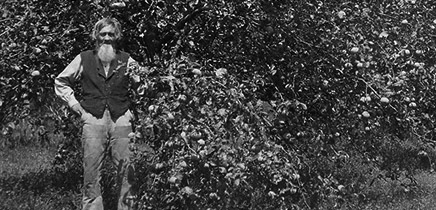We are officially two months from the end of our three-year-long capital challenge campaign to save the Peterson farmhouse. It has been a rollercoaster, especially since November of 2021. This blog will chronicle the ups and downs of the capital campaign and where we are at now, as we face a deadline that will make or break the campaign.
It is very rare that you will see me write from the heart. Usually, I work very hard to not use the “I” word. To quote a famous fictional detective, “Just the facts, mam.” The Peterson farm is very different. It’s massive historic nature and a promise made to its donor, to make his dream a reality has always been the focus.
It was the spring of 2016, and my Legacy grant for a Historic Structures Report (HSR) had just been turned down. This was the document required to start the process of restoring the buildings on the Peterson farm. The MNHS staff had recommended its approval, but for some reason, the HRAC board had turned it down. I was devastated. I gave myself the weekend at a remote state park to feel sorry for myself, then returned on Monday with a determination to save Andrew’s farm buildings. I reached out to the Preservation Alliance of Minnesota, (now Rethos) and asked if they knew of any places that might fund an HSR. They recommended the Jeffris Family Foundation (JFF).
The Jeffris Family Foundation was established in 1979 by Bruce and Eleanor Jeffris, and their son Tom.
Bruce Jeffris was born of a pioneer family that immigrated to Wisconsin from Kentucky in the 1840s. He joined the Parker Pen Company after World War I and retired as Chairman of the Board in 1960.
The Foundation focused on the rich architectural heritage of Wisconsin’s small towns and cities. In 2009 the Foundation expanded its reach to small towns and cities in Illinois, Indiana, Iowa, Michigan, Minnesota, Missouri, and Ohio.
In short order, Royce Yeater from the foundation, contacted me and asked to visit the farm. Following the visit, the JFF offered to pay for half the cost of the HSR if we would raise the other half. The other condition was that we would have to commit to a larger capital campaign to raise the funds to do the construction work.
The bid we had received to have the HSR completed for the middle barn, south barn, granary and the house was $100,000. Up to that point the most the CCHS had ever raised was $50,000. The deadline to raise the funds was December 2016. It was September. With these figures looming, it would have been easy to say, “It’s not possible”, but that was never an option. It wasn’t even considered. The question I only considered was, “How are we going to do this.”
McDonald Mack completed the HSR on November 22, 3017. Funded through many private donations, the Community Foundation of Carver County, the Jeffris Family Foundation, the National Trust for Historic Preservation and the Thomas C. and Lois L Sando Foundation.
With the HSR in hand, the CCHS Board of Directors next needed to decide which building we would focus our fundraising on. The house was the most expensive by far, but the house was also the most critical for interpretation of the property. A feasibility study was commissioned. The results showed that we could raise $500,000 IF we utilized grants in addition to foundations and donors.
In June of 2019, we signed the documents with the JFF agreeing that if we raised $500,000, they would give us $250,000. A fundraising committee consisting of board members and several volunteers was formed. The beginning of July 2019, we kicked off the drive. As you may remember, it was only six months later that Covid hit and foundations changed their giving priorities to food shelves. The question became, “How can we ask the public for funds to restore a buildings, given the horrible conditions of Covid?”
End of Part 1


